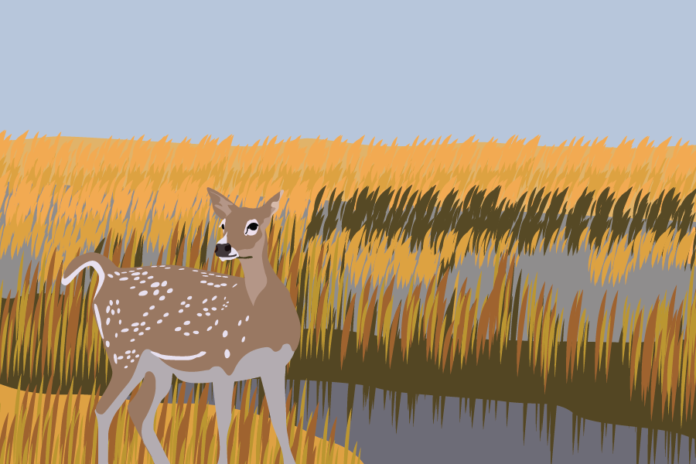Plan in place to engage community, facilitate pollination
The Yolo Bypass Wildlife Area might be unfamiliar to those who are not avid bird watchers or agriculturalists, but it plays a crucial role in the Delta region. Viewable for those traveling on the Interstate 80 causeway, the Yolo Bypass Wildlife Area (YBWA) constitutes a stretch of wetlands, wildlife areas and agriculture.
The California Department of Fish and Wildlife owns and operates the YBWA.
“Yolo Bypass Wildlife Area’s approximately 16,600 acres is a haven for fish, waterfowl, shorebirds and wading birds, neotropical migratory birds, raptors, invertebrates, snakes, turtles, toads, and bats,” the California Department of Fish and Wildlife’s website reads. “The wildlife area is also a key cog in the Sacramento region’s flood control system.”
In the wet seasons, many land-dwelling animals can get stranded in floods. Field Biologist Ryan Caruthers from the California Department of Fish and Wildlife commented on which species are most affected by the flooding that occurs.
“The flooding affects all the land-based animals out there from rodents to rabbits [and] burrowing owls,” Caruthers said. “They also affect our skunks, raccoons, coyotes and our deer that are out there.”
In order to combat some of the negative effects of the flooding that occurs in this area, the Yolo County Resource Conservation District (RCD) has devised a plan to construct corridors for flood escape as well as other environmental installations.
Heather Nichols, the leader of the project for wildlife flood escape and executive director of the Yolo RCD, spoke about some of the vegetal installations that will be implemented as well as community engagement activities that are to occur. Nichols said this project will be a work in progress until the spring of 2022.
“We are doing a series of planting events in March in order to engage members of the community,” Nichols said. “Because we’re in the Bypass, we have to use flexible materials. We can’t use trees, so we’ll be using shrubbery to construct a cover for wildlife. These structures will primarily benefit our pollinators, those being local bees and hummingbirds.”
These plants will also benefit the land-dwelling animals, Caruthers added.
“This native vegetation is going to provide cover for the animals,” Caruthers said. “It will lead them off of the wildlife area to the high ground.”
The West Sacramento Chamber of Commerce’s website contains further information on the scope of the project.
“This effort will create five miles of cover for wildlife escaping flood events, enhance year-round habitat for migratory birds, pollinators and other wildlife, provide a public-access demonstration planting and increase awareness and appreciation of the YBWA and its values and functions by holding high school field days and community volunteer stewardship events,” the website reads.
Outcomes for wildlife will improve soon after the planting efforts start, Caruthers clarified.
“As soon as they are able to get these native plants in the ground, and they are able to seed and start providing some sort of cover structure for these animals, we’ll be able to start seeing impacts immediately,” Caruthers said.
Those who wish to stay up to date on the project should consult the Yolo County Resource Conservation District website.
Written by: Rachel Heleva — city@theaggie.org





